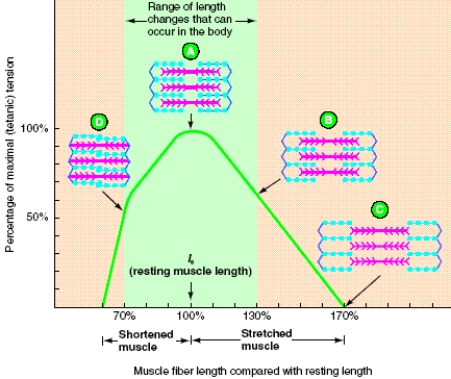Question 11
(Multiple Choice)
In the length-tension curve shown, why does force decrease at sarcomere lengths less than lo? 

A) Not as much Ca2+ is released in a sarcomere with a length less than lo..
B) Interference between actin filaments originating from opposite ends of the sarcomere prevents maximal or optimal cross-bridge formation.
C) The muscle fiber runs out of ATP.
D) In this situation, Ca2+ availability and the position of the actin filaments are responsible for the decrease in muscle shortening because ATP will still be available.
E) All of these contribute to reduced muscle shortening in a sarcomere with a length less than lo.
Answer